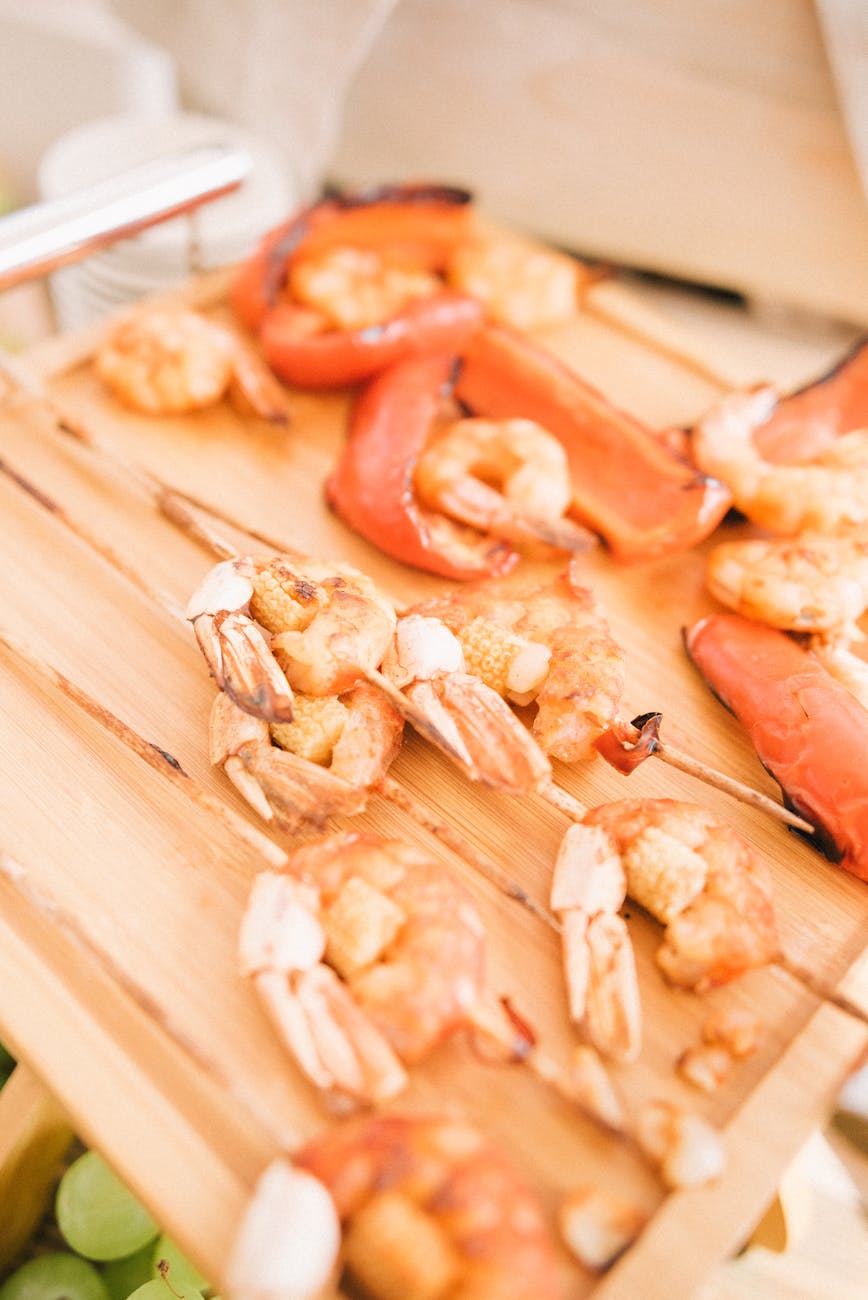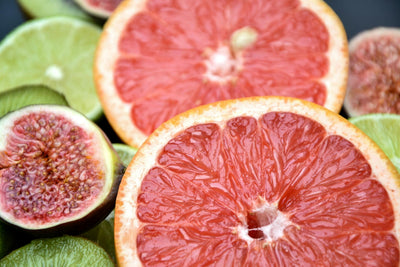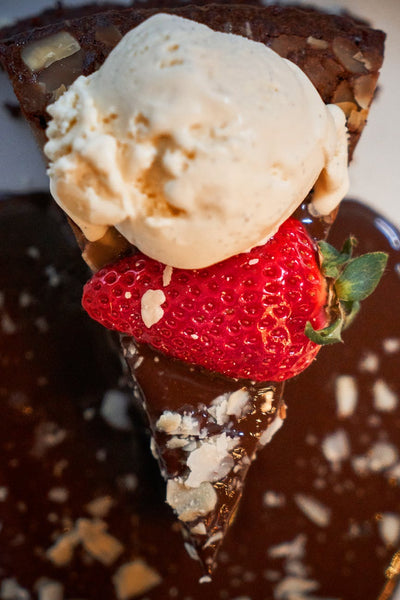Understanding Food Storage
Importance of Proper Food Storage
Proper food storage is critical for maintaining food quality, extending shelf life, and ensuring safety. By storing your food correctly, you prevent the growth of harmful bacteria that can cause foodborne illnesses. It also helps to preserve the nutritional value, flavor, and texture of the food. In the case of cooked shrimp, as with many other perishables, following the proper guidelines for refrigeration is key to enjoying your seafood safely and deliciously.
Guidelines for Refrigerating Cooked Shrimp
When it comes to refrigerating cooked shrimp, there are precise guidelines you should follow to ensure it remains safe to eat and retains its quality:
-
Temperature: Your refrigerator should be set at or below 40°F (4°C), the safe temperature recommended by food safety experts to inhibit bacterial growth.
-
Time: As a general rule, cooked shrimp should be refrigerated within two hours of cooking. If the surrounding temperature is above 90°F (32°C), such as during a hot summer day, that window is reduced to just one hour.
-
Storage Duration:
- Cooked shrimp can be safely stored in the refrigerator for 3 to 4 days.
- If you can't consume the shrimp within this timeframe, it's advisable to freeze it.
-
Containers: Store cooked shrimp in shallow airtight containers or wrap tightly with heavy-duty aluminum foil or plastic wrap to prevent air from drying out the shrimp.
-
Cross-contamination: Always keep cooked shrimp separate from raw foods, especially other raw seafood, to prevent cross-contamination.
For more detailed information about storing other types of foods, such as how long you can keep eggs or chicken in the fridge, explore our comprehensive guides.
Remember, these guidelines are not just about keeping your food safe; they're also about enjoying the flavors of your dishes at their best. So, whether you've indulged in a seafood feast or are planning meals for the week, ensure your tasty shrimp dishes are stored correctly 'from feast to fridge'.
Storing Cooked Shrimp
Proper storage techniques for cooked shrimp are critical to maintaining its quality and safety. Following the right procedures can extend the enjoyment of your seafood feast well beyond the initial meal.
Cooling Cooked Shrimp
Before you store cooked shrimp in the refrigerator, it's crucial to cool it properly to prevent the growth of harmful bacteria. Allow the shrimp to cool to room temperature for no longer than two hours. If the shrimp is still warm after cooking, spread it out on a clean baking sheet to expedite the cooling process. Once cooled, it's ready to be stored.
Proper Container for Storage
To ensure the longevity and safety of your cooked shrimp, select an airtight container or a heavy-duty Ziploc bag for storage. This helps to prevent air and moisture from affecting the quality of the shrimp, as well as keeping any odors from permeating your refrigerator. If you're using a container, be sure it's properly sealed to avoid contamination.
Placement in the Refrigerator
The placement of your cooked shrimp within the refrigerator is just as important as the container you choose. Store the shrimp on the coldest part of the fridge, typically at the back of the shelf, and away from the door. This area is less affected by temperature fluctuations caused by opening and closing the refrigerator door. For optimal safety and quality, keep the shrimp separated from raw food items to avoid cross-contamination.
For more insights into refrigerator organization and the best practices for storing different types of food, you can explore our comprehensive guides, such as unlocking fridge bliss: the ultimate guide to organizing your fridge and maintain freshness: the key to setting the right refrigerator temperature. Additionally, if you're interested in learning about the shelf life of other foods, check out articles like how long does curry stay fresh in the fridge and how long can you keep cooked pasta in the fridge.
Shelf Life of Cooked Shrimp
Understanding the shelf life of cooked shrimp is essential to maintaining food safety and ensuring you enjoy your seafood at its best quality. The following sections will provide guidance on the general timeframe for refrigeration and factors that can affect the longevity of cooked shrimp.
General Timeframe for Refrigeration
After enjoying a delightful seafood feast, you may wonder "from feast to fridge how long can you keep cooked shrimp in the refrigerator?" The answer is that cooked shrimp can be safely stored in the refrigerator for a period of 3 to 4 days. To best maintain the quality and safety of your cooked shrimp, ensure that you refrigerate it within 2 hours of cooking.
| Storage Condition | Recommended Timeframe |
|---|---|
| Room Temperature (Above 90°F) | 1 hour |
| Refrigeration (Below 40°F) | 3 to 4 days |
For more information on how long other foods last in the fridge, you might find our articles on how long do eggs last in the fridge and how long does curry stay fresh in the fridge helpful.
Factors Affecting Shelf Life
Several factors can influence the duration for which cooked shrimp remains fresh and safe to consume:
- Temperature: Shrimp should be stored in a refrigerator that maintains a temperature below 40°F to slow down bacterial growth.
- Freshness at the Time of Cooking: The initial quality of the shrimp when cooked will impact how well it holds up during refrigeration.
- Handling and Cross-Contamination: Proper food handling practices, including using clean utensils and avoiding cross-contamination with raw foods, are crucial.
- Sealing and Airtight Containers: Limiting exposure to air can reduce the risk of bacterial contamination and help maintain freshness.
- Cooking Method: The way shrimp is cooked may also affect its shelf life. For instance, shrimp in a moist dish like curry may last slightly longer than dry grilled shrimp.
For more insights into proper food storage and handling, check out our guides on mastering food safety for chicken and maximizing the lifespan of rice in the fridge.
By being mindful of these considerations, you can ensure that your cooked shrimp remains delicious and safe to eat within the recommended timeframe.
Signs of Spoilage
When it comes to leftovers, particularly seafood, it's critical to be able to identify signs of spoilage to prevent foodborne illness. This is especially true for cooked shrimp, which can harbor bacteria if not stored properly.
How to Tell If Cooked Shrimp Has Gone Bad
You can tell if cooked shrimp has gone bad through several clear indicators. These signs include:
- Color Changes: Fresh shrimp should have a translucent pinkish hue. If you notice any discoloration, such as a milky white, yellowing, or grayish tone, it's a sign that the shrimp is no longer safe to eat.
- Unpleasant Smell: One of the most noticeable signs is an off-putting odor. Fresh shrimp has a mild, briny smell, so any strong, sour, or ammonia-like odors indicate spoilage.
- Texture: If the shrimp feels slimy or sticky to the touch, it's a clear indication that it has spoiled. The flesh should be firm and snap back when pressed.
- Taste: If you're unsure based on smell and appearance, a small taste can confirm spoilage. However, this method is not recommended due to the potential risks involved.
Tips for Identifying Spoiled Shrimp
To ensure you're accurately identifying whether your cooked shrimp has spoiled, consider the following tips:
- Visual Inspection: Examine the shrimp closely for any signs of mold or unusual growths, which can appear as fuzzy spots or discoloration.
- Trust Your Nose: Your sense of smell is a powerful tool for detecting spoilage. If the shrimp has an unpleasant or strong fishy odor, it's best to err on the side of caution and discard it.
- Check the Texture: Gently press the shrimp with your finger. If it leaves an imprint or feels mushy, it's a sign that the shrimp is no longer fresh.
- Storage Duration: Refer to the guidelines provided in the article on how long you can keep cooked shrimp in the refrigerator. If you've exceeded this timeframe, it's safer to dispose of the shrimp.
Remember, when in doubt, throw it out. Consuming spoiled shrimp can lead to food poisoning, which is not worth the risk. For more information on food storage and safety, you can read about preserving the catch discover the shelf life of tuna in the fridge and maintain freshness the key to setting the right refrigerator temperature. Additionally, for other food storage guidelines, check out the ultimate guide how long does curry stay fresh in the fridge and chicken storage 101 how to safely store cooked chicken in the fridge.
Safe Handling Practices
When it comes to preserving the freshness and safety of cooked shrimp, proper storage methods are paramount. Here are some food safety tips and best practices for organizing your fridge to ensure your seafood remains delicious and safe to consume.
Food Safety Tips for Storing Shrimp
To maintain the quality and safety of cooked shrimp, follow these guidelines:
- Temperature Control: Ensure your refrigerator is set at 40°F (4°C) or below, which is the safe zone to prevent bacterial growth.
- Prompt Storage: Place cooked shrimp in the refrigerator within two hours of cooking to minimize the risk of bacterial contamination.
- Airtight Containers: Use sealed containers or resealable plastic bags to ward off bacteria and prevent the shrimp from absorbing other food odors.
- Cross-Contamination: Store cooked shrimp on higher shelves and away from raw seafood or meats to avoid cross-contamination.
- Refrigeration Duration: Generally, cooked shrimp should be consumed within 3 to 4 days; any longer may increase the risk of foodborne illness.
For more information on food preservation and safety, you can read about mastering food safety with chicken and exploring the shelf life of eggs.
Proper Labeling and Organization in the Fridge
Organizing your refrigerator not only helps with food safety but also makes meal planning more efficient. Here are some tips for labeling and organizing:
- Date Labeling: Always mark the storage date on your containers of cooked shrimp. This helps you track how long the shrimp has been in the fridge and prevents you from consuming spoiled food.
- Shelf Organization: Assign specific shelves in your refrigerator for different types of food (e.g., one shelf for ready-to-eat foods like cooked shrimp and another for raw ingredients).
- Separate Seafood: Keep seafood separate from other foods by using designated containers or sections in the fridge.
- Visibility: Store shrimp in clear containers to easily see what you have, which can help you use up leftovers before they spoil.
Understanding how to effectively organize your refrigerator can be further explored in articles like unlocking fridge bliss and the elegance of black french door fridges.
Following these safe handling practices ensures that your cooked shrimp remains a delicious and safe option from feast to fridge. Always be mindful of food storage guidelines to enjoy your seafood at its best.
Utilizing Cooked Shrimp
Cooked shrimp can be a versatile ingredient in your culinary repertoire. Once you've mastered the storage techniques for your shrimp in the refrigerator, you can turn your attention to creative and delicious ways to enjoy them.
Creative Ways to Use Leftover Cooked Shrimp
Leftover cooked shrimp can be a delightful addition to many dishes. Here are some ideas to inspire you:
- Shrimp Salad: Toss chilled shrimp with mixed greens, avocado, and a tangy vinaigrette for a refreshing salad.
- Shrimp Tacos: Combine with a spicy slaw, fresh cilantro, and a squeeze of lime juice for taco night.
- Pasta Delight: Stir into pasta with garlic, cherry tomatoes, and a splash of white wine.
- Shrimp Fried Rice: Sauté with vegetables, rice, and soy sauce for an easy stir-fry dish.
- Shrimp Omelette: Add to eggs with cheese and spinach for a protein-packed breakfast.
Experimenting with cooked shrimp can be a fun and rewarding way to enhance your meals. Remember to always check your shrimp for freshness before using it in any dish. For guidelines on refrigeration and shelf life, you may refer to our article on from feast to fridge how long can you keep cooked shrimp in the refrigerator.
Reheating Cooked Shrimp Safely
Reheating cooked shrimp is simple, but it's essential to do it properly to maintain their texture and flavor:
- Microwave: Place shrimp in a microwave-safe dish with a splash of water, cover, and heat on high for 1-2 minutes.
- Stovetop: Gently warm shrimp in a skillet with a bit of oil or butter over low heat.
- Oven: Arrange shrimp in a single layer on a baking sheet, cover with foil, and reheat at 275°F (135°C) for 10-15 minutes.
| Method | Temperature | Time |
|---|---|---|
| Microwave | High | 1-2 minutes |
| Stovetop | Low Heat | Until Warm |
| Oven | 275°F (135°C) | 10-15 minutes |
Always ensure that reheated shrimp reach an internal temperature of at least 145°F (63°C) to ensure they are safe to eat.
Enjoy your cooked shrimp in various dishes or as a standalone treat. With the right storage and reheating methods, you can safely savor the flavors of your seafood feast for days to come.
Extending Shelf Life
Proper storage can significantly extend the shelf life of cooked shrimp, ensuring that your feast remains safe and delicious for future enjoyment. Freezing is an excellent way to preserve cooked shrimp for an extended period.
Freezing Cooked Shrimp
When freezing cooked shrimp, it's important to follow a few key steps to maintain quality and safety:
- Allow the shrimp to cool completely before freezing to prevent the growth of harmful bacteria.
- Place the shrimp in airtight, freezer-safe containers or heavy-duty freezer bags to protect against freezer burn and odor absorption.
- Label the containers or bags with the date of freezing to keep track of how long the shrimp has been stored.
- Place the shrimp in the coldest part of the freezer, ensuring that it is set to 0°F or below for optimal preservation.
By following these steps, you can safely store cooked shrimp in the freezer for up to 6 months. For more detailed guidelines on proper food storage, including how to crack the code on how long eggs last in the fridge, explore our comprehensive food storage articles.
Best Practices for Freezing and Thawing Shrimp
Freezing:
- Spread the shrimp out in a single layer on a baking sheet, and freeze until solid. This prevents the shrimp from clumping together.
- Once frozen, transfer the shrimp to airtight containers or bags as previously mentioned.
- Remove as much air as possible from freezer bags to reduce the risk of freezer burn.
Thawing:
- Plan ahead and thaw the shrimp in the refrigerator overnight. This is the safest method to maintain quality and reduce the risk of bacterial growth.
- For a quicker thawing method, place the shrimp in a sealed bag and submerge it in cold water, changing the water every 30 minutes until thawed.
- If you're in a hurry, you can use the microwave's defrost setting, but be sure to cook the shrimp immediately after thawing to prevent bacterial growth.
It's essential to never thaw shrimp at room temperature or in warm water, as it can quickly become a breeding ground for bacteria. For additional tips on preserving your culinary creations, check out our guide on the ultimate way to keep curry fresh in the fridge.
Remember, the key to enjoying your delicious cooked shrimp later is proper freezing and thawing techniques. By following these best practices, you can extend the shelf life of your shrimp, reduce food waste, and enjoy your feast for months to come.
Get Your Upgrade or New Addition at Fridge.com
Whether you're searching for your perfect fridge, freezer, wine fridge, beer fridge, ice maker, or kegerator, we have what you need.
Shop the world's best brands at Fridge.com.
We also have tons of awesome articles about kitchen stuff and home news. Enhance your home, garage, backyard, patio, and office with the coolest essentials. With every necessary type of residential refrigerator or freezer in our collection, we've got you covered.
Elevate your game and shop now at Fridge.com!






